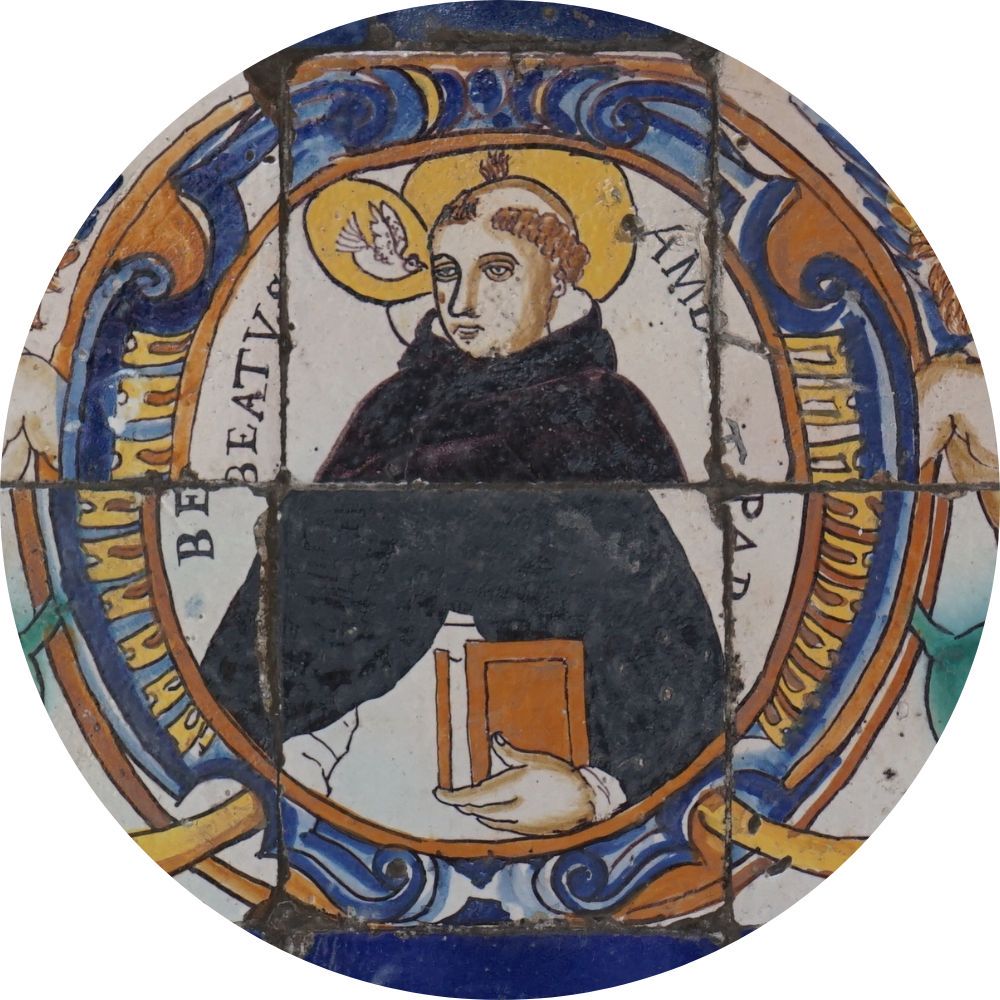Bl. Ambrose Sansedoni of Sienna
Bl. Ambrose Sansedoni of Sienna
(1220-1286)
Ambrose was born in Siena in 1220 and came from a noble Sansedoni family. Legend has it that when he was a small child, he was cured at the Dominican church of St. Mary Magdalene from a congenital deformity. He was known for his mercy and selfless love for pilgrims, the sick in hospitals and prisoners. At the age of seventeen, he entered the novitiate of the Dominican Fathers' priory in his hometown. He was sent to Paris, where he and his colleague Saint Thomas Aquinas continued their philosophical and theological studies, and afterwards to Cologne, where he studied with Saint Albert the Great from 1248. In 1260, he was one of the missionaries who evangelized Hungary. Six years later, Sienna was indicted for supporting the cause of Emperor Frederick II, then for hostility toward the Holy See. The people of Siena asked Ambrose to present their case to the Pope. His was so successful in doing this that he obtained a full pardon and renewal of all its privileges for his hometown. When the city again abandoned loyalty, Ambrose received a pardon for it a second time. He reconciled Konradin, the ruler of Swabia, and Pope Clement IV. Around the same time, he was elected bishop, but declined the office. For some time, he devoted himself to preaching the Eighth Crusade. Later, at the request of Pope Gregory X, he caused studies to be resumed at a Dominican monastery in Rome. After Pope Gregory X died, he resigned his duties and settled in one of the Dominican monasteries, from where he was summoned by Innocent V and sent as papal legate to Tuscany. He restored peace between Florence and Pisa, as well as between the Republics of the Republic of Venice and Genoa. He died in Sienna in 1286.
He was considered a model of humility. He was a well-known preacher, but - despite the fact that his works were collected - they have not survived to this day. He was a distinguished diplomat and advocate of peace. Pope Gregory XV beatified him in 1622. His memorial falls on March 20. In iconography, he is shown with a book or a dove. The former attribute signifies his scholarship and the theological knowledge he possesses, while the latter symbolizes peace and divine inspiration. For it is known that Bl. Ambrose not only brought peace between the feuding Gibellines and Guelphs, but also contributed to the abolition of the interdicts imposed on Siena by Popes Sylvester IV and Gregory X.
Bibliography:
- [Sansedoni B.], La sancta vita di beato Ambrosio da Siena, Siena 1509.
- Croissant F.G., Synopsis vitae, et miraculorum B. Ambrosii (Sansedoni) Senensis, Bruxeliis 1623.
- Paparonibus I. de, Legenda B. Ambrosii de Senis O.P., „Analecta Sacri Ordinis Praedicatorum”, 41 (1933), pp. 155-172, 224-235.
- Kaeppeli T., Le prediche del Beato Ambrogio Sansedoni da Siena, „Archivum Fratrum Praedicatorum”, 38 (1968), pp. 5-12.
- D’Urso G., Beato Ambrogio Sansedoni 1220-1287. Vita e iconografia, Siena 1986.
- Toritti P., L’iconografia del beato Ambrogio da Siena, „Bullettino senese di storia patria”, 100 (1993), pp. 212-383.
- Redon O., Una famiglia, un santo, una città. Ambrogio Sansedoni e Siena, a cura di S. Boesch Gajano, Roma 2015.
- Redon O., Un culte civique ou familial, du XIIIe au XVIIIe siècle: Ambrogio de Sienne, [in:], Monaci, ebrei, santi. Studi per Sofia Boesch Gajano. Atti delle Giornate di studi „Sophia kai historia”. Roma, 17-19 febbraio 2005, a cura di A. Volpato, Roma 2008, pp. 195-223 (Studi e ricerche, 16).

